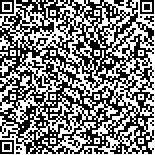| 摘要: |
| 老年人使用菜市场频率的高低在很
大程度上体现了其日常体力活动水平和健康
生活质量,与菜市场自身及周边的建成环境特
征息息相关。从可达性和吸引力两个层面入
手,将其分解为空间接近度和出行适宜度以
及自身规划要素和外界环境特征两个维度,
构建整合性分析框架。结合大连市的实证研
究,可达性方面,相较于出行适宜度,空间接
近度对老年人菜市场使用频率的影响效度更
大;吸引力方面,自身规划要素和外界环境特
征的影响效应呈相互补充关系;相较于可达
性,吸引力是影响老年人菜市场使用频率的主
导因素,其中集市类型和设施网点多样性最为
关键。据此提出满足老年人健康生活需求的
菜市场精细化改造建议。 |
| 关键词: 老年人 体力活动 菜市场 建成环
境 可达性 吸引力 |
| DOI:10.13791/j.cnki.hsfwest.20210409 |
| 分类号: |
| 基金项目:国家自然科学基金资助项目(52078095,
51638003) |
|
| Exploring the Impact of Built Environment on Usage Frequency of Food Market from thePerspective of Elderly Healthy Life |
|
WEI Yue,YANG Dongfeng
|
| Abstract: |
| Physical activity level is closely related to the healthy life of residents, especially for
the elderly, appropriate physical activity has a positive effect on their physical and mental health.
Buying foods is one of the important activities in the daily travel of the elderly in the city, which
has a significant impact on their quality of lives. The frequency of food market used by the
elderly reflects their daily physical activities level to a large extent, and is closely related to the
characteristics of food market itself and surrounding built environment. In the fruitful research
on the relationship between the built environment and physical activity, there is still a lack of
systematic decomposition of the built environment and in-depth discussion on the healthy life of
the elderly.
In order to analyze the key influencing factors of the built environment of the frequency
of food market used by the elderly, and to explore the needs of the built environment from
the perspective of healthy life of the elderly, this paper from two levels of accessibility and
attractiveness, decomposes built environment into two dimensions: spatial proximity and travel
suitability, self-planning elements and external environment characteristics, and constructs an
integrated analysis framework. The convenience of spatial conditions and environmental quality
of the food market determine the results of its use. Through these two levels, we can clearly and
structurally reflect the impact of the food market on users. In terms of data collection, through
the questionnaire and structured interview survey of the elderly in the central area of Dalian,
the elderly were randomly asked about the place, time, frequency and personal attributes of
shopping activities, so as to obtain the daily travel data of the elderly. In the analysis method,
ArcGIS software is used to analyze the spatial characteristics of variables, the nuclear density
analysis method is used to analyze the spatial layout characteristics of the facilities network, and
the buffer zone analysis method is used to determine the research scope around the food market.
With the help of SPSS software, the specific index elements of the accessibility and attractiveness
of the built environment of the food market and the use frequency of the elderly were analyzed
respectively, and the significant influencing factors were screened.
It is found that in terms of accessibility, spatial distribution density promotes the elderly
to buy foods, the increase of minimum space distance, actual travel distance and the number of
intersections has a negative impact on the frequency of using foods market, while the correlation
between the satisfaction of walking facilities and the usage frequency has not passed the significant test. Compared with the travel suitability, the spatial proximity has a negative impact on the elderly food market usage frequency has a
greater effect on validity. In terms of attractiveness, the types and nature of land use have significant differences in the average use frequency of the
elderly’s food market. Compared with the street functional richness and land use mix, the diversity of facilities and outlets significantly promotes
the elderly’s food buying activities. The impact of self-planning elements and external environmental characteristics complement each other.
Comprehensive analysis shows that compared with accessibility, attractiveness is the dominant factor affecting the usage frequency, in which the
market type and the diversity of facilities and outlets play a key role.
It can be seen that buying foods is not a simple transactional activity for the elderly. It is an important direction of refined transformation of
urban food market under the demand of healthy life of the elderly to promote the formation of "accessible and available" characteristics of facilities
and places, and to support the elderly to form an active physical activity mode. In the aspect of space layout, we should not only ensure that there
are enough choices for the elderly to buy foods, but also consider increasing the actual travel distance to improve the physical activity level. In the
aspect of place characteristics and quality, it should keep the diversity of food market types, improve the quality of "informal" market space, and it’s
suggested that the food market should be compared with other elderly places facilities (squares, parks, etc.) and it’s required to be interwoven to form
a systematic travel activity chain. |
| Key words: The Elderly Physical Activity Food Market Built Environment Accessibility Attractiveness |


